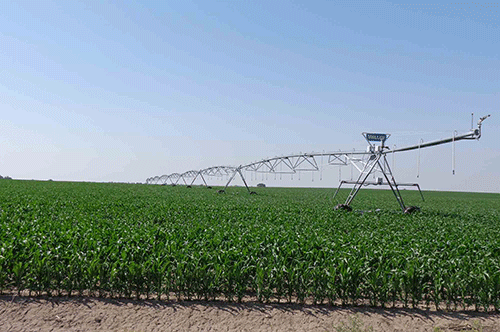The local agronomy sector experienced a decline in production of about 60.1% from 55 036 tonnes recorded in the second quarter of 2022 to 21 953 tonnes registered in the second quarter of this year, especially in leading crops such as white maize, millet and wheat.
The decrease is proportionally reflected in all crops, with white maize suffering a decline of 60.4%, while wheat production dropped by 54.5%, and production of millet plummeting by 11.9%, respectively.
The latest statistics are contained in the Namibia Statistics Agency (NSA)’s Agriculture, Forestry and Fishing Sector Bulletin for the second quarter of 2023.
Similar to the distribution of the second quarter of 2022, white maize dominated the production of controlled grains by 21 648 tonnes, followed by millet at 295 tonnes. Wheat recorded the lowest production of 10 tonnes.
Meanwhile, the total export of agronomy products for the second quarter of this year was valued at a meagre N$15 000, compared to over N$119 000 which was recorded in the corresponding quarter of 2022. The export earnings recorded for the quarter under review were solely from white maize.
Notably, the import bill for the second quarter of 2023 amounted to almost N$300 million, which is a significant drop from the N$471.3 million registered in the corresponding quarter of 2022.
During the quarter under review, import of cereal grains was dominated by wheat, which stood at N$171.9 million, followed by maize at N$121.2 million and rice with a bill of N$3.3 million.
In terms of the import destinations, Namibia mainly imported her cereal grains from South Africa valued at N$155.0 million and from Poland at the value of N$142.0 million, representing shares of 51.8% and 47.5%, respectively.
Drop in fresh produce
Also, during the second quarter of this year, locally purchased controlled fresh produce stood at 4 377 tonnes, which is a drop from the 5 055 tonnes that was registered in the parallel quarter of 2022.
Potatoes dominated the local purchase, recording 1 318 tonnes, followed by onions in second place with purchases amounting to 1 216 tonnes. Tomatoes, butternuts and cabbage for the quarter under review featured among the top five locally purchased domestic produce recording 467 tonnes, 446 tonnes, and 357 tonnes, respectively.
Specially controlled fresh produce includes all fruits and vegetables that are regulated by the Namibia Agronomic Board (NAB) through import restrictions and market share promotion schemes.
Under the border control, NAB ensures that no imports of fresh produce are allowed when there is sufficient domestic supply. Likewise, the market share promotion compels buyers to source some percentage of their demand from the local market before they are given import permits. These government efforts are designed to secure markets for local producers.
Equally, during the same review period of 2023, dates were the main export earnings of local horticultural products at N$25.8 million, followed by tomatoes and vegetable seeds reporting N$3.3 million and N$1.4 million.
On the import fresh produce front, potatoes dominated the horticultural products, claiming an import bill of N$17.2 million during the second quarter of 2023. Apples and onions followed in second and third positions registering import bills of N$8.7 million and N$7 million, respectively.


